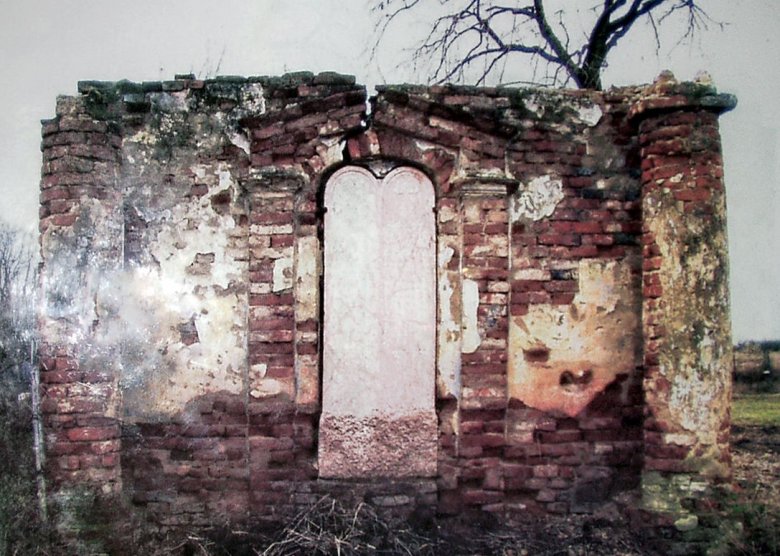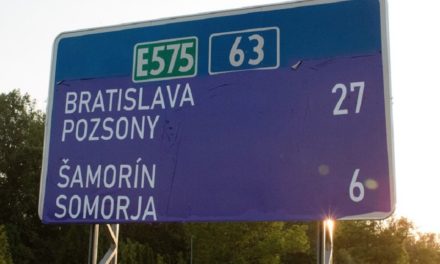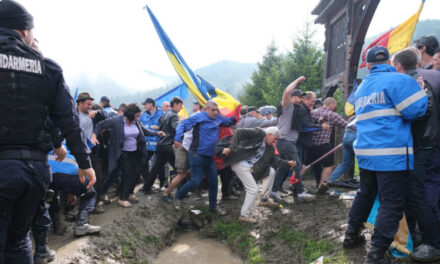The cemetery is history. An open book about the dead, the living, the present, the future. Artists, poets, church dignitaries, teachers, old noble families, inventors, patrons, imperial-royal chamberlains and lords of all orders are laid to rest in the cemetery gardens of Bihar county, mostly under bushes overgrown with bushes, writes the Transylvanian Diary .
What does the thicket hide in Gálospetri?
The Bernáth family played a major role in the 1848-49 War of Independence. During the imperial reprisal, they also lost their property, together with their huge mansion, which was given to the Bujanovics loyal to the emperor. Vince Bernáth had estates in Érkbölkút and Gálospetri. He did not participate in public affairs, so he could keep his wealth. His wife was Falussy Jeanette from Abraham. Their only child, Ilona ippi, became the wife of Fráter Vincené. He donated a plot of land to the Gálospetri school with the stipulation that their crypt would be cared for after his death. The family also provided a larger donation for the reconstruction of the Petri church. He died in this village in 1875 and is buried here. For years, it was impossible to approach the crypt due to plant tendrils, brambles, and weeds. Only the coat of arms along with his name was found on the pediment of the tomb.
Many other burial places also met this fate on the Coins. Even today, there are old cemeteries where the graves of Hungarian noble families are overgrown. They were not allowed to be taken care of during the communist state power, so the bagpipes, rackets and flutes guard the dreams of the ancestors.
Untended cemeteries, where only lilac bushes and acacia saplings grow, can cover many graves that posterity no longer knows about.
Gyula Dráveczky, his wife, Erzsébet, and his son, Gyula, are buried in Gálospetri, in the abandoned cemetery. They were the last residents of the ruined manor house in the village.
Baronage and Diplomacy
Gábor Drávezcky, who obtained the title of baron, was still based in the county of Szepes, when in 1779 Mária Terézia granted him the rank of nobleman. However, the most famous ancestor was László, who had a castle and manor in Gálospetri and Köbölkút. In 1829, an earthquake causing enormous material damage devastated Érmellék and the Nagykároly area, then again in 1834. The epicenter of the latter was around Gálospetri, residential buildings, churches and mansions collapsed. That's when the IV was destroyed. Colonel László Dráveczky also built a castle with a four-cylinder bastion tower.
At the end of the 1848 revolution, Pál Vasvári organized free troops on Kossuth's orders, including in Érkbölkút. He entrusted the management of this team to László Dráveczky. The inauguration of the flags of the free teams took place on April 27 in Nagyvárad. The colonel also earned a reputation for his country and family as an excellent diplomat. Ede sleeps his eternal sleep in a common grave with his son in the garden of the Reformed church in Köbölkút.
Remembering the freedom struggle, the locals place commemorative flowers on his tombstone. The obelisk bearing their names was once made by Aurél Veiszlovits. Language innovator and writer Ferenc Kazinczy's parents, József and Zsuzsánna Bossányi, met in Várad after their relative László Draveczky from Gálospetri introduced them to each other. The wedding took place in Semjén on June 19, 1758. This Dráveczky may have been the great-grandfather of László of the same name, who participated in the war of independence. The noble families of Ermyllék were all related to each other through their intermarriages. It is almost impossible to follow the complicated connections of the kinship threads. Descendants of the former Szepes family still live today around the world.
The undeservedly forgotten graves of famous people
The Mihályfalv cemetery hides perhaps the ashes of most of the noble families and famous people of Érmellék. The Bujanovics, Mária Kemény, Gáspár Fráter and his second wife, Zsuzsanna Lovass (his first wife was Gizella Szlávy), a branch of the Szlávy family, as well as the African researcher János Kovács, the Andrássyaks, the painter Károly Fekete, the poet Imre Máté and forgotten pastors, teachers and soldiers. The Kollings, who provided electricity to Mihályfalva and Székelyhíd as early as 1912, are also buried here. The famous landowners Horsemen and Coaches. The famous pharmacist of the 1800s, István Mátrai, and the names of those who sleep their eternal sleep on the sand hill could be listed for a long time. But no matter how famous and notable they were, no matter how devotedly they served the generations as day laborers of the nation, the truth of humanity treats everyone equally. And more than once undeservedly.
The granite stone of József Kovács, a teacher from the 1800s, is barely visible from the bushes, a candle has not been lit at its base for years. The obelisk of János Szőke, a reformed priest and dean, is also abandoned and without an owner.
The descendants of those who rest in the Lovass graves (there are several) also died out, they avoided the settlement, visitors are rare even on All Saints' Day. The tomb of Fráter Gáspár (1852–1927), a former physician of Érmihály village, from Ippi and Érkeserű, was crumbling for decades, and next to it was a pile of debris and garbage as part of the grave of the former healer. Thanks to Mária Turucz, one of the town's doctors - who has since shared eternal peace with him - it was rebuilt.
The tombs are also important from a historical and cultural-historical point of view. After the defeat of the 1848-1849 revolution and war of independence, general Lajos Nyíri was wounded by the imperialists at the border of Kiskágya. He died a few days later and was buried in this cemetery.
Not only does he sleep his eternal sleep here, but the tombs of noble families dating back two centuries can also be found in the cemetery garden. Another tombstone was made of red marble in 1855, which is notable for the poetry of its inscription.
The roughly 170-year-old stone inscription really arouses the interest of passers-by:
"This mournful tomb / Whose faithful memory exemplifies our life / Whose short existence here / The beginning was a joy / The end is with woe / He lived only as a feeble wanderer / This grave, which he cherishes with his memorial / In his bosom / Here with his 10 children / Whom the blessed heaven / Rest in peace / With eternal glory / Desired hope.”
Sometimes it happens that volunteer hands clean up their surroundings and restore their original shape, but then again no one breaks a path towards them for years.
For those who don't light candles
The descendants of the above-mentioned large families are also buried in undeserving places in the cemeteries of Érkenez and Érselénd. Blurred inscriptions on a ruined brick wall in the border of Selénd refer to the Fraters. According to some records, Slavs are also buried on the sand hills of these cemeteries. Lights no longer burn over their ashes. In the crypt under the local Reformed church, the Bernáths of Mihályfalv dream of a better outcome of the 1948 War of Independence. They could not have had a more worthy place. In cemeteries, pine and ebony coffins are dusted side by side. Even the thicket weaves the marble obelisks and boat head trees equally. The former sometimes fall down and break, the masts and wooden crosses rot. And the sandbanks are smoothed out like scars, and the paths leading to them are lost.
Above the entrance to one of the Jewish cemeteries in Nyirség is the sign "The House of Life". The cemetery is the cradle of the sprouting new life...
Author: Éva Sütő / Transylvanian Napló
The full article can be read HERE
Cover photo: Blurred inscriptions on a dilapidated brick wall in the outskirts of Érselénd refer to the Fraters • Photo: Éva Sütő












